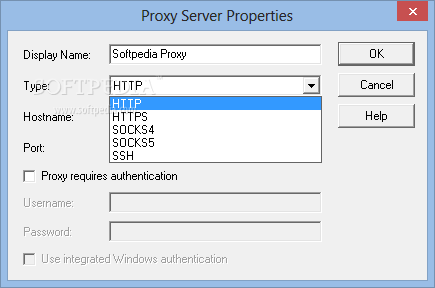

- PROXYCAP CHROME FOR FREE
- PROXYCAP CHROME UPDATE
- PROXYCAP CHROME DRIVER
- PROXYCAP CHROME LICENSE
- PROXYCAP CHROME WINDOWS
If you complete the process successfully, then your proxy settings will be enabled in Chrome browser and other Windows apps that copy proxy settings from Internet Explorer. This brings the Internet Options? page, click on the OK button there as well. Once you have completed your configurations, click on the ‘OK’ button. You can choose have it configured automatically with a script, or you can manually set up a proxy server by providing an IP address and port number. A tool which can do that, and which has a tutorial on this, is Prox圜ap. From there, you can modify the proxy settings. and have their own method of setting a proxy (like firefox, chrome). The LAN (Local Area Network) settings page opens up. Click on LAN settings from the page that opens. From that page, navigate to the Connections tab and click on it. That brings you to ‘Internet Options’ page from windows. The option is located in the bottom part of the menu page.Ī drop-down menu opens, navigate to the part that says, ‘system’ From that section, locate the ‘Open Proxy Settings’ option and select it. The three dots icon is the button used to access settings.įrom the drop-down menu, click on settings.Īnother menu page opens, navigate your mouse pointer to the ‘Advanced’ option and click on it. To change systems proxy settings, please follow the steps below:įrom your Chrome browser, locate the three dots icon in the top-right corner of your screen and click on it. Google Chrome Browser is using your computer’s system proxy settings to connect to the Internet. P.S.: you might want to check out this Wiki page for some other socks proxies and socksifiers.How to use Proxy-N-Vpn proxies with Google Chrome Browser a sort of Swiss army knife for socksifying programs. However I'm happy to have learnt about WideCap, it's a very nice piece of software. This method is definitely not for novice users.
PROXYCAP CHROME DRIVER
thus when the service (svchost.exe) starts, the WideCap driver will have access only to SYSTEM's registry.
PROXYCAP CHROME UPDATE
The SYSTEM user comes into the game, because the given svchost.exe (that makes the connection to the MS Windows Update servers) runs with SYSTEM's credentials. You've to set up WideCap, export the program's registry from the current user's tree to disk (it's HKEY_CURRENT_USER\Software\Bert's Software\WideCap for me), replace the registry key pathes with the path of the SYSTEM user's registry (it's HKEY_USERS\S-1-5-18\Software\Bert's Software\WideCap for me) and import it back to the Windows registry. The problem is that WideCap stores all of its settings in the user's registry that installed the application.
PROXYCAP CHROME FOR FREE
However this tool is shareware (you can use it for free only in a 30-day trial period) and due to a small design glitch you've to hack its settings a little bit to make it socksify the services running through svchost.exe. Prox圜ap overview Prox圜ap enables you to redirect your computers network connections through proxy servers. It can redirect all TCP connections to a SOCKS server right from the start. WideCap hijacks Winsock (the socket subsystem of Windows networking), thus it's like a virtual network driver on top of Windows' TCP stack. It comes from the developer of FreeCap, but he rewrote the whole thing. One program capable of socksifying svchost.exe (aka.
PROXYCAP CHROME LICENSE
For this one to work the socksifier program has to load before the first service loads that uses svchost.exe (the "Generic Host Process for Win32 Services"), since an instance of this executable tries to connect to MS's webservers, when you start the Windows Update process. action required 1.all current and active licensed users of opentext socks client will need to downloadproxycap socks client from the company portal - microsoft start menu -> company portal 2.from the company portal page for proxycap socks client, request a license for proxycapusing the slm request process.

or you could pick any HTTP proxy and use a "sockisfier" to add SOCKS capabilities to it (there're quite a few.

You could set Windows Update with proxycfg to use the local HTTP proxy, and set the HTTP proxy to use the given SOCKS proxy.


 0 kommentar(er)
0 kommentar(er)
